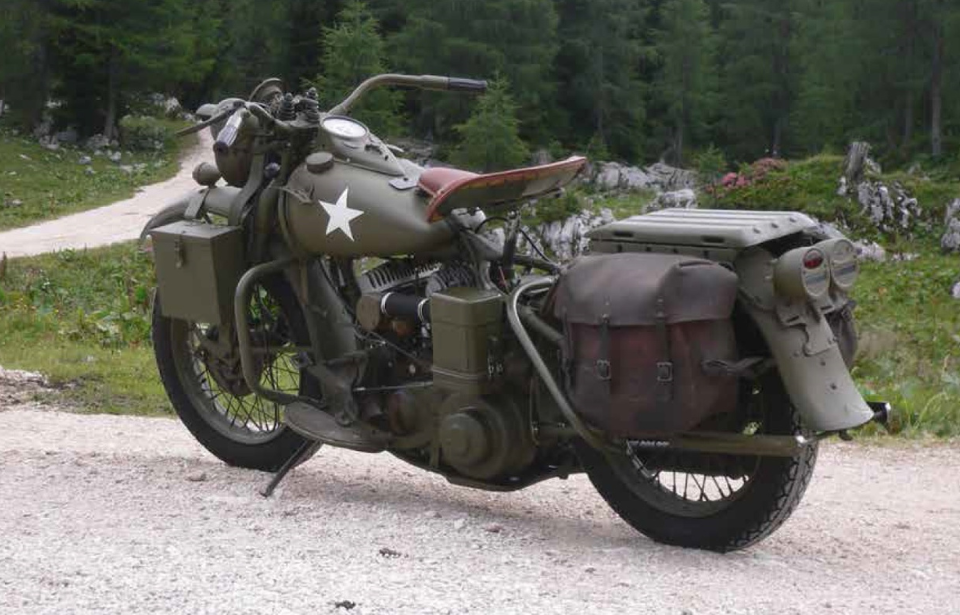Though less powerful and protective than other vehicles used during WW2, motorcycles were widely fielded throughout the conflict. They proved to be useful among messengers and reconnaissance troops, especially in fast-moving formations. The following is a list containing nine of the most common to appear on the frontlines, from German designs to those originating in the United States.
FN M12
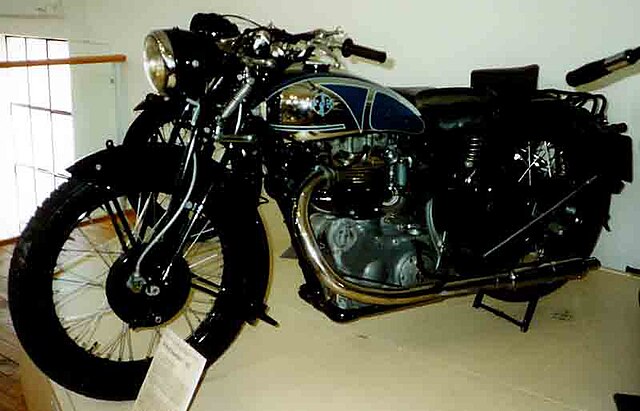
By the interwar period, FN was a major motorcycle manufacturer, with the company providing motorcycles to both civilians and militaries throughout Europe. Among the most popular with the armed forces was the M86, and this prompted the development of a model specifically designed for military use.
The FN M12 motorcycle was among those used in the early days of WW2 – and it was significantly better than its predecessor. It had a twin-cylinder flathead piston engine, which allowed it to reach speeds of up to 62 MPH. Attached to the side was a sidecar, and the vehicle overall was perfect for covert military use, as its reverse gear allowed it to maneuver well in small spaces.
Unfortunately, the German invasion of Belgium marked the end of the M12, as the Wehrmacht confiscated all units, with some going on to see service with the enemy on the Eastern Front.
BMW R75
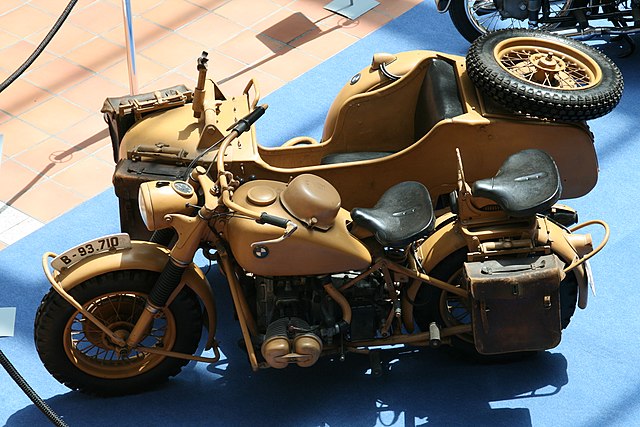
Development of the BMW R75 began in the late 1930s, at the request of the Wehrmacht. A large, heavy motorcycle, it was used heavily throughout WW2 by the Germans on both the Eastern Front and during the North Africa Campaign. The latter, with its dust and sand, resulted in a few changes to the design, including the change from metal fork covers to ones made from rubber.
Equipped with a sidecar, the BMW R75 was sometimes seen mounted with an MG 34 machine gun, giving it firepower similar vehicles didn’t have. While initially viewed as more of a “tow mule” by the German military, the motorcycle eventually was used by Kradschützen Truppen – mobile infantry forces within the Wehrmacht and SS.
Zündapp KS 750
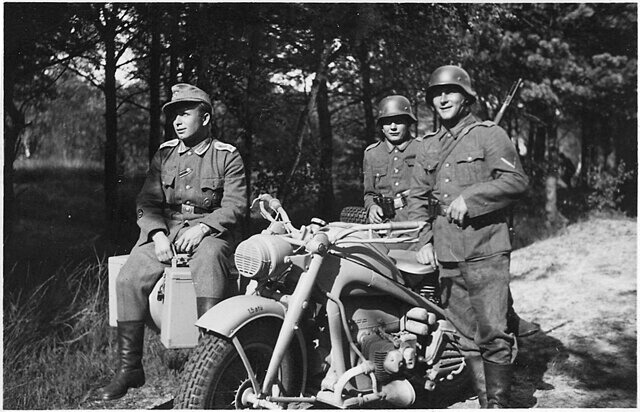
Another WW2-era German motorcycle, the Zündapp KS 750 featured a particularly heavy design and similar layout to the BMW R75. With a standardized sidecar, there was little to differentiate it from the latter, especially considering it served a similar role on the frontlines in North Africa, Italy and on the Eastern Front.
What made the KS 750 unique was that it featured two driven wheels – rear and sidecar – which afforded it better drive. Over the course of WW2, some 18,695 units were produced, after which Zündapp produced the motorcycle for the Finnish Army and the civilian market.
Type 97
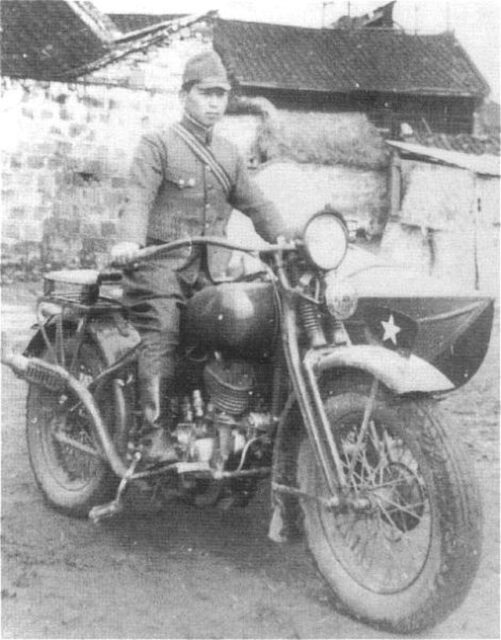
Produced between 1935-45, the Type 97, or Rikuo, was a WW2-era Japanese motorcycle that was a copy of the Harley-Davidson. Produced under a license from the American company, the vehicle was used by the Imperial Japanese Army (IJA) – in particular, those on the home islands.
While the most common variant, the Type 97 wasn’t the only one fielded by the Japanese. A version without the sidecar, known as the Type 93, was also produced by the Sankyo Corporation during the wartime period.
Welbike
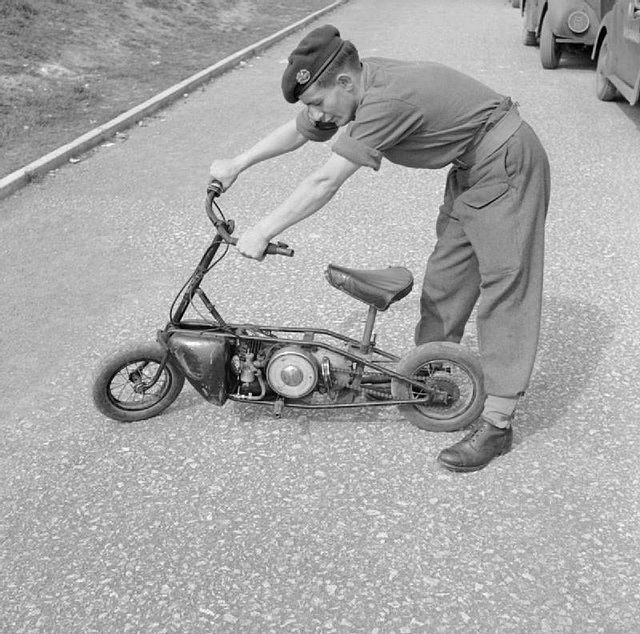
A rather unusual sight on the battlefield, the Welbike, manufactured by Excelsior Motor Company, was a foldable motorcycle used by the British Army during WW2. Commissioned by the Special Operations Executive‘s (SOE) Station IX (“Inter Services Research Bureau”), the aim was to provide airborne troops with a vehicle that could be dropped from a parachute and easily transported.
While equipped by the British 1st and 6th Airborne Divisions during Operation Market Garden, the Welbike definitely wasn’t a preferred mode of transportation. This is because it could carry no equipment, was almost useless off-road and what wound up being a rather difficult transportation process, on the part of its parachute/shipping container.
By the end of the conflict, the Welbike was no longer being used for military purposes. Instead, it found its way onto the civilian market, due to its cheap design and portability on the ground.
Norton WD16H
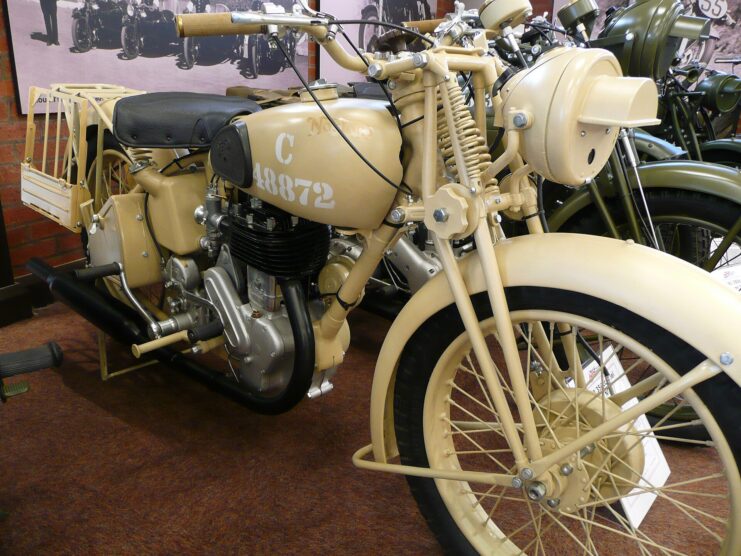
The Norton 16H had been on the market since 1911, but WW2 brought about a new model of the motorcycle: the WD16H. Norton Motorcycle Company was the primary producer of it for the British Army during the conflict, with the factory in Birmingham used to manufacture the WD16H – up to 500 a week!
The WD16H’s ruggedness and dependability made it popular, despite its modest performance. The British Army mostly used it as a solo vehicle during convoy marshaling and to dispatch riders, but it also saw a purpose during training and reconnaissance. The Royal Air Force (RAF) equipped the motorcycle with a sidecar, allowing for two people to operate it.
Norton WD Big 4
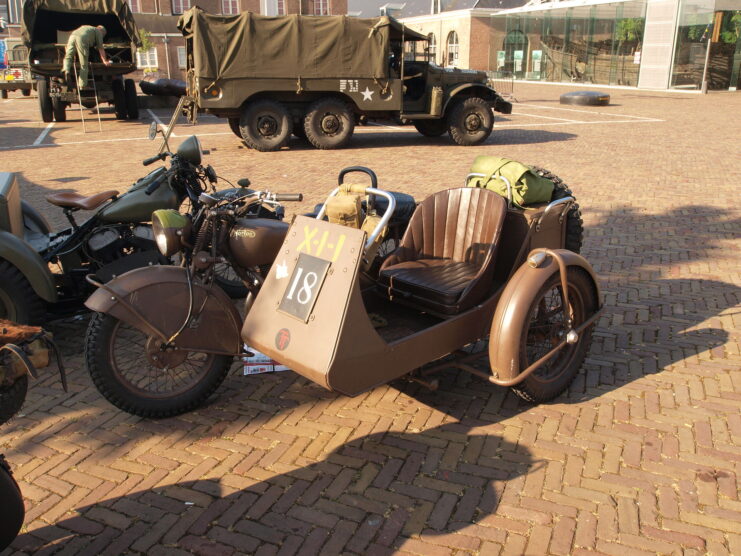
Also known as the Norton 633, the WD Big 4 was essentially a more powerful version of the WD16H. Designed from the start to be fitted with a sidecar, it had a powerful 633cc engine and was known for how easy it was to maintain in the field.
While the sidecar was unarmored and made from thin sheet metal, it was designed in a way to allow for the mounting of such weapons as the Bren light machine gun or a three-inch mortar. It could also be used as a weapons platform for bombs if the situation presented itself.
While popular during WW2, the motorcycle was ultimately replaced by the Willys Jeep, which has since become synonymous with the military.
Cushman Airborne Scooter (Model 53)
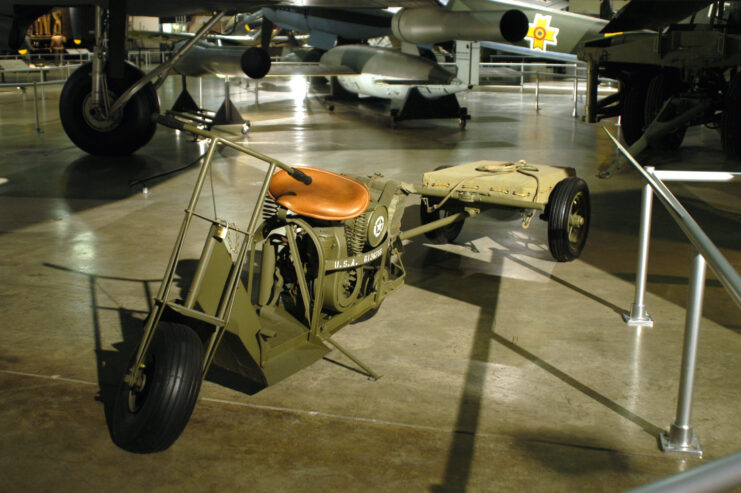
While the Cushman Airborne Scooter didn’t make an appearance in the European Theater until the latter stages of WW2, it was a handy tool for Allied paratroopers – in particular, those from the United States.
The vehicles, powered by a single-cylinder engine, were manufactured beginning in 1944, with nearly 5,000 produced by the end of the conflict. Their primary use was to transport troops and weapons between positions, with protection coming in the form of the scooter’s ability to be mounted with either an 81 mm mortar or a .30-caliber or .50-caliber machine gun.
Harley-Davidson WLA
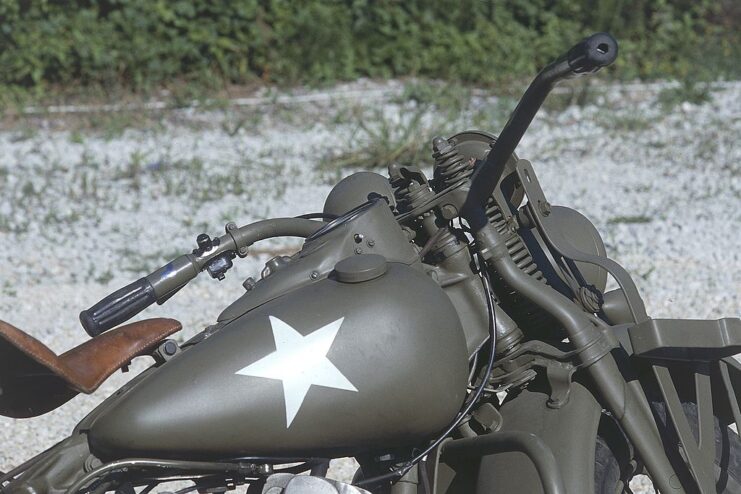
Arguably the most famous WW2-era motorcycle on this list, the Harley-Davidson WLA was equipped by the US Army throughout the conflict. Produced between 1940-52, it was more widely known by the nickname “the Liberator,” and while based on a civilian model did feature several changes, including its paint job, fenders, fording, accessories and air cleaner. It also had a second set of blackout lights to ensure safe travel in dark conditions.
While not initially designed to feature a sidecar, the variants used by the Soviet Red Army were adapted to feature one. The WLA was largely used for escort and police work by the US Army during WW2, with the motorcycle also being used for courier duties, scouting operations, courier duties and the transportation of radio equipment.
More from us: USS Kidd (DDG-100): The Only US Navy Warship That’s Allowed to Fly the Jolly Roger
Over the course of WW2, more than 90,000 were produced, with production restarting upon the outbreak of the Korean War.
